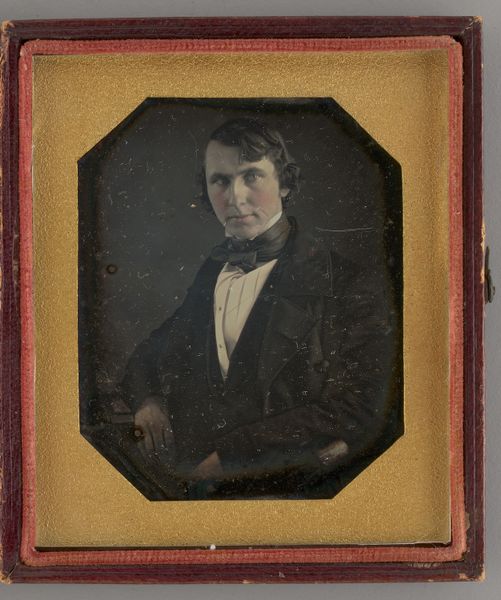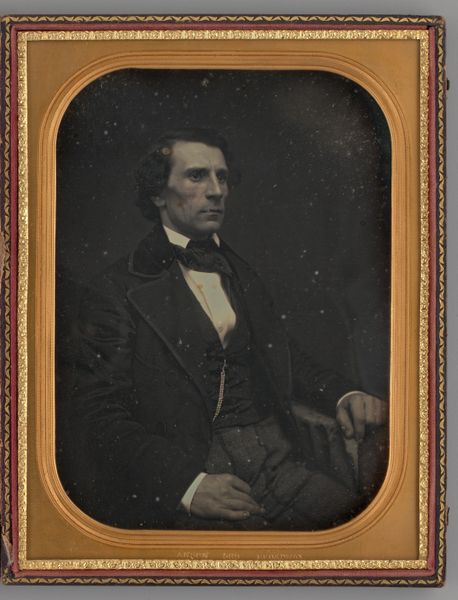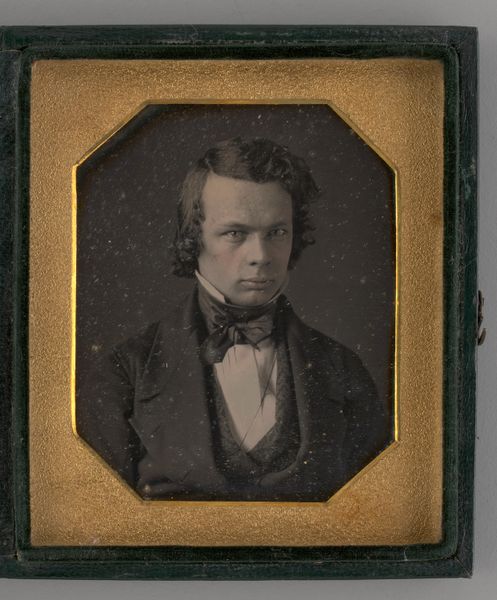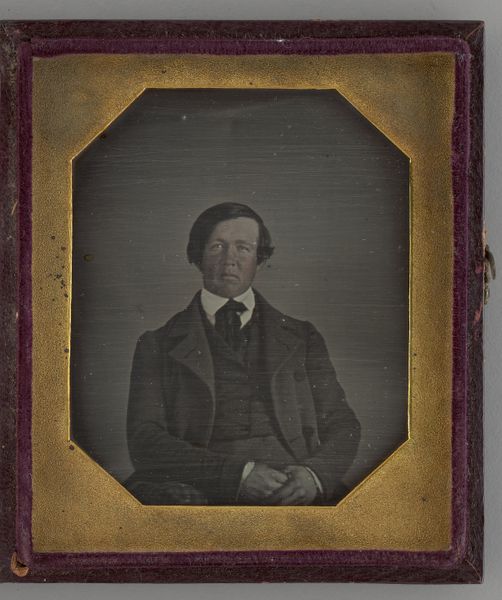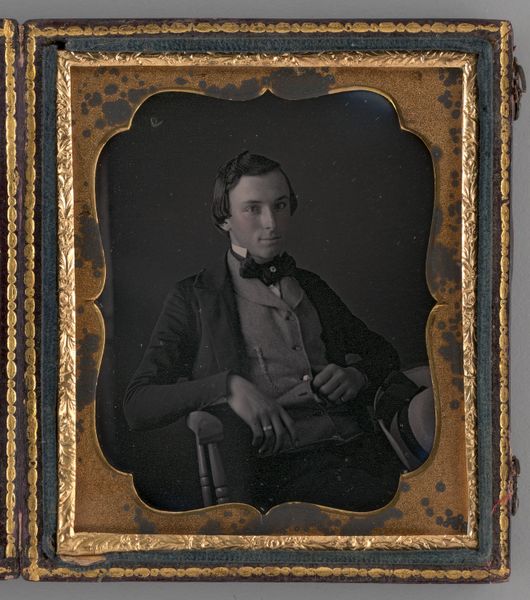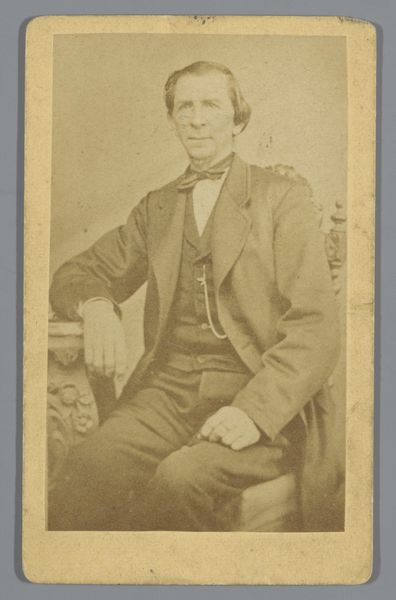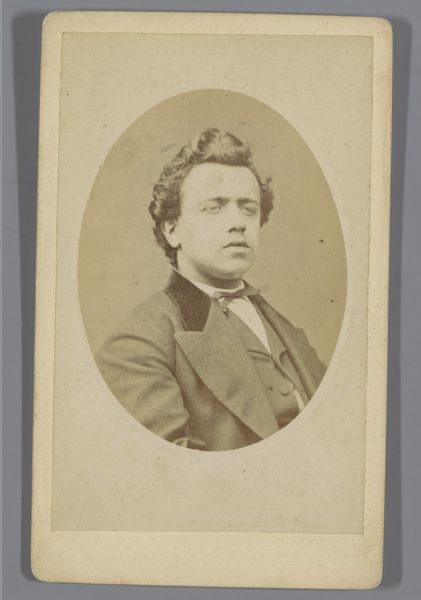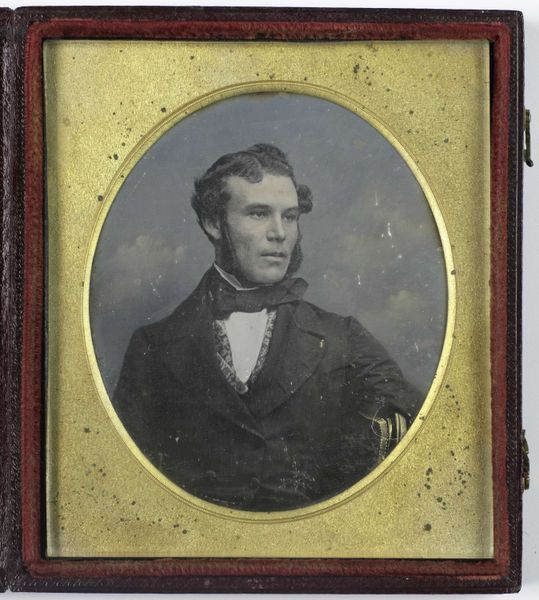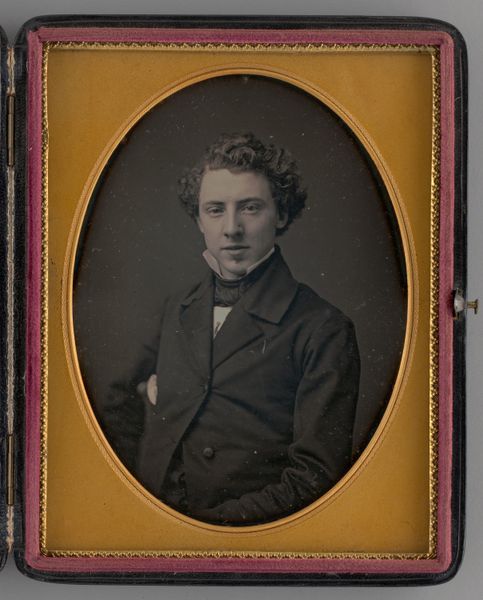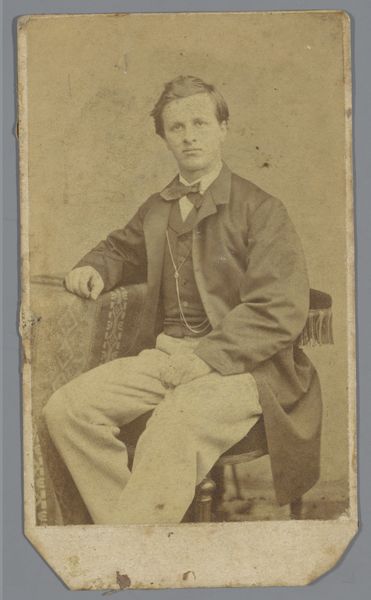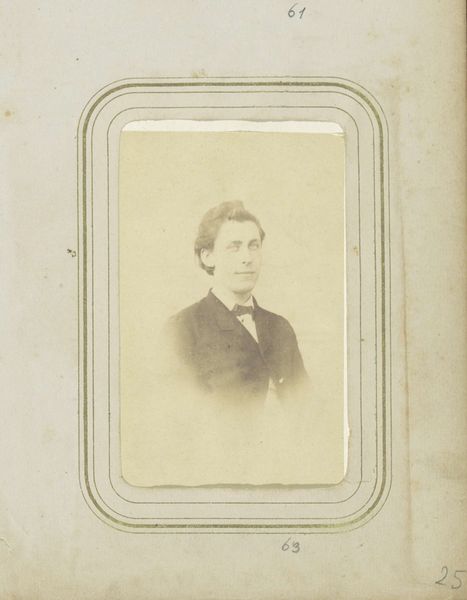
#
pasteup
#
oil painting
#
portrait reference
#
unrealistic statue
#
coffee painting
#
framed image
#
portrait art
#
watercolor
#
fine art portrait
#
celebrity portrait
Dimensions: image (visible): 9.4 × 6.7 cm (3 11/16 × 2 5/8 in.) mat: 10.8 × 8.1 cm (4 1/4 × 3 3/16 in.) case (closed): 12.07 × 9.6 × 1.9 cm (4 3/4 × 3 3/4 × 3/4 in.)
Copyright: National Gallery of Art: CC0 1.0
Editor: This is "Edmund Ashworth Jr.," a portrait from around 1855. It looks like it's made using an early photographic process, maybe a daguerreotype or something similar? There's a seriousness to his expression... a certain reserve. What do you see in this piece? Curator: What immediately strikes me is how this image, despite its formal constraints, seeks to convey status through very specific visual cues. Consider the gold watch chain, the precisely tied cravat, the composition that speaks to the sitters stature and legacy as something aspirational and symbolic of a modern industrious man.. Can you see that legacy expressed in this medium, a new process back then? Editor: I see what you mean about status... but it also feels a little stiff, doesn't it? Like he's presenting an image of himself rather than showing who he really is. Curator: Exactly. These early photographs often acted as almost totemic objects, replacing painted portraits for a rising middle class. Think about what symbols they might chose to pass down as heirlooms or cultural memory.. Ashworth seems conscious of crafting a specific kind of memorial. Editor: So, you're saying it's not just about capturing a likeness, but also about constructing a kind of… visual legacy? Curator: Precisely. Every element—from his clothing to his pose—contributes to this carefully constructed persona. A businessman made lasting through art, which could perhaps give insights into the cultural or financial priorities of his community at the time? Editor: I never thought of it that way. It's interesting how much symbolism can be packed into a single image. It almost transcends being simply a portrait. Curator: Indeed. Images like these are portals. When decoded correctly, we unlock not only the image, but perhaps something about the hopes, anxieties, and ideals of an era. Editor: That's really made me think about portraiture in a whole new light! Thanks!
Comments
No comments
Be the first to comment and join the conversation on the ultimate creative platform.
